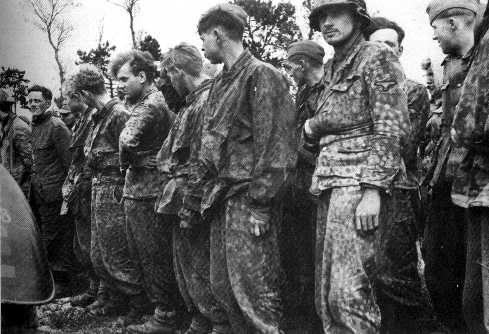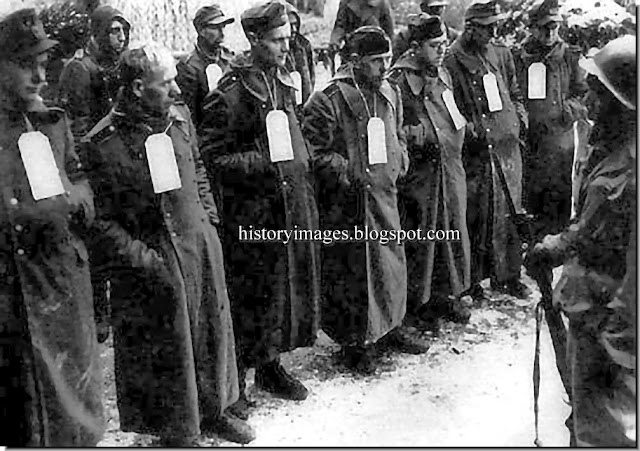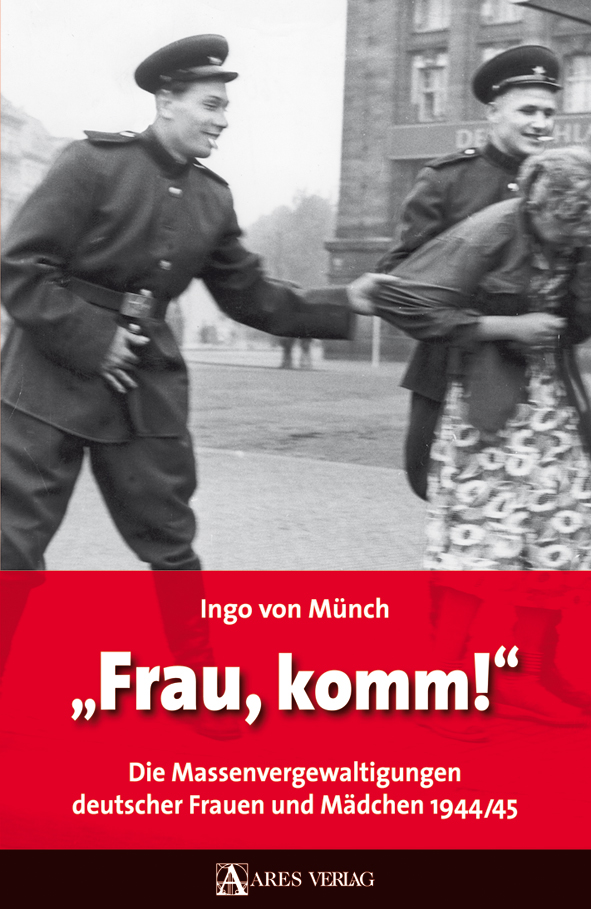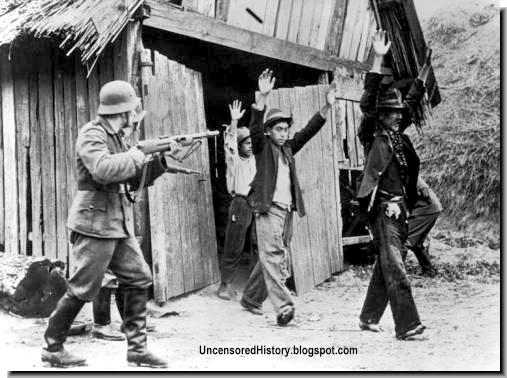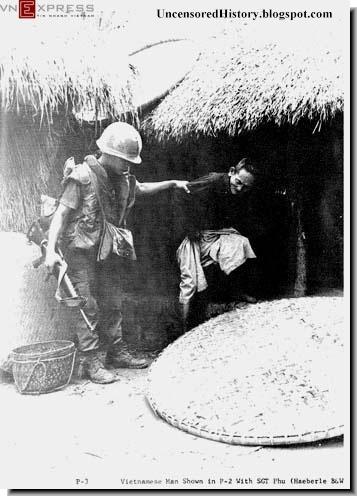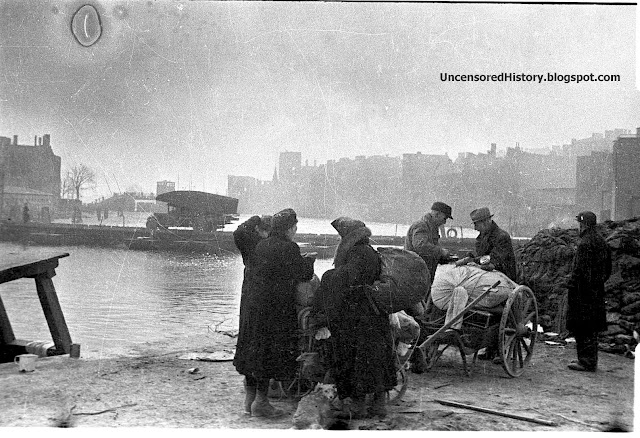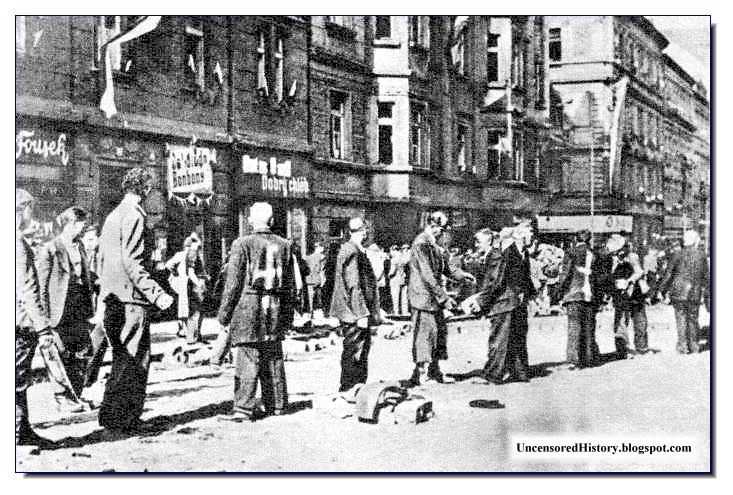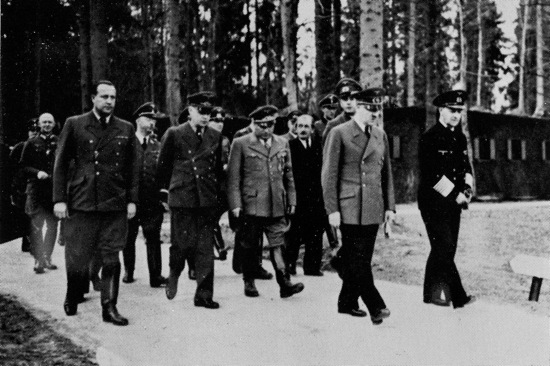There is no shortage of books on the Battle of Normandy, which also goes by the name of D-Day. And the same can be said about films, such as Steven Spielberg's award-winning film "Saving Private Ryan," which was a global success. Indeed, it would almost seem that everything that could be said about the battle has been said.
-------------------------------
Eisenhower hated Germans, he told his wife Mamie in a letter in September 1944. Why? "Because the German is a beast." In front of the British ambassador to Washington, in August, he said that all the 3,500 or so officers of the German General Staff should be "exterminated." He would include for liquidation all leaders of the Nazi party from mayors on up,plus all members of the Gestapo. 33 This would total about 100,000 people.
-----------------------------

Still, that didn't deter British historian and best-selling author Antony Beevor from taking another stab at the material. While conducting research for his newest book, "D-Day: The Battle for Normandy," Beevor stumbled upon something that is currently a matter of much debate among experts. If some of these scholars are correct, Allied soldiers committed war crimes in Normandy to a much greater extent than was previously realized.
Beevor extensively quotes reports and memoirs of those who took part in the invasion, many of whom state that American, British and Canadian troops killed German POWs and wounded soldiers. They also reportedly used soldiers belonging to the German Wehrmacht or Waffen SS as human shields and forced them to walk through minefields.
For example, one recounts the tale of a private named Smith, who was fighting with the 79th US Infantry Division. Smith allegedly discovered a room full of wounded Germans in a fortification while he was drunk on Calvados, a local apple brandy. According to the official report: "Declaring to all and sundry that the only good German was a dead one, Smith made good Germans out of several of them before he could be stopped."
In another account, Staff Sergeant Lester Zick reportedly encountered an American soldier on a white horse who was herding 11 prisoners in front of him. He called out to Zick and his men and told them that the prisoners were all Poles, except for two Germans. Then, according to Zick, the soldier took out his pistol "and shot both of them in the back of the head. And we just stood there."
Beevor also quotes John Troy, a soldier with the 8th Infantry Division, who writes of finding the body of an American officer the Germans had tied up and killed because he had been caught carrying a captured German P-38 pistol. Troy describes his reaction in the following way: "When I saw that, I said no souvenirs for me. But, of course, we did it too when we caught (Germans) with American cigarettes on them, or American wristwatches they had on their arms."
Rage and Violence
The issue of war crimes is an incredibly sensitive one. But, in this case, the evidence is overwhelming.
Given the high number of casualties they suffered, Allied paratroopers were particularly determined to exact bloody revenge. Near one village, Audouville-la-Hubert, they massacred 30 captured Wehrmacht soldiers in a single killing spree.
On the beaches, soldiers in an engineering brigade had to protect German prisoners from enraged paratroopers from the 101st Airborne Division, who shouted: "Turn those prisoners over to us. Turn them over to us. We know what to do to them."
When the same LSTs (landing ship tanks) were used to evacuate both German POWs and Allied wounded, the wounded attacked the Germans, and it was only through the intervention of a pharmacist's mate that nothing more serious happened.
Beevor frequently quotes from personal memoirs of Allied soldiers that have been available to historians for years. But could it be that they were ignored by them until now because they didn't support the image of the "greatest generation," the term that Americans have liked to use to describe their victorious soldiers from 1945? It would seem that no shadows were to be cast on the war that gave the Americans, in particular, the moral right to have a say in shaping Europe's postwar future as well as creating the practical conditions for it to do so.
Still, that approach has recently been revised. In his 2007 book "
The Day of Battle: The War in Sicily and Italy, 1934-1944" Pulitzer Prize-winning author Rick Atkinson described various war crimes committed by the Allies. And now we have the same thing with Normandy.
Beevor primarily attributes the Allied crimes to the epic ferocity of the battles. The Germans themselves called it a "dirty bush war," a reference to the bushes and hedgerows, ranging in height between one and three meters (three and ten feet), used to demarcate the fields in Normandy's bocage landscape.
Indeed, Normandy's terrain is ideally suited for ambushes and booby traps. For example, German units stretched thin steel cables across roads at head level, so that when an American Jeep came roaring down the road, its driver and passengers would be decapitated. They also attached hand grenades to the dog tags of dead GIs, so that anyone who tried to remove the dog tags was blown up. Likewise, it is an established fact that German soldiers, and particularly those in the Waffen SS, shot prisoners.
Allied Behavior Doesn't Forgive Germany 's
The artillery fire from both sides and the Allied bombing attacks transformed Normandy into a moonscape. Beevor writes about soldiers who huddled in the craters screaming and weeping, while others walked around as if in a trance picking flowers in the midst of explosions. Indeed, American physicians reported 30,000 cases of combat neurosis among their troops alone.
In a letter to his family in Minnesota, a US infantryman wrote that he had never hated anything quite as much, adding: "And it's not because of some blustery speech of a brass hat."
But such "blustery speeches" did exist. According to the findings of German historian Peter Lieb, many Canadian and American units were given orders on D-Day to take no prisoners. If true, that might help explain the mystery of how only 66 of the 130 Germans the Americans took prisoner on Omaha Beach made it to collecting points for the captured on the beach.
It is also conspicuous that the Allies rarely captured members of the Waffen SS. Was it because the members of this organization -- with its Totenkopf (death's head) insignia -- had sworn allegiance to Hitler until death and often fought to the last man? Or did the Allied propaganda about the SS have its desired effect on soldiers? "Many of them probably deserved to be shot in any case and know it," a British XXX Corps report bluntly stated.
http://www.spiegel.de/international/world/the-horror-of-d-day-a-new-openness-to-discussing-allied-war-crimes-in-wwii-a-692037.html
Other Losses: An Investigation into the Mass Deaths of German Prisoners at the Hands of the French and Americans after World War II by JAMES BACQUE
--------------------------------------------------
Sainte-Mère-Eglise became a focal point for many scattered detachments. One member of the 82nd Airborne was amazed to see two troopers from the 101st come riding bareback down the road on horses they had taken from a field. Another appeared driving a captured half-track motorcycle. Only a small number of paratroopers lost in the countryside appear to have been inactive. A few bedded down in ditches wrapped in their chutes, waiting for the dawn to find their bearings. The large majority, however, could not wait to get into the fighting. With nerves still taut after the jump, their blood was up. A trooper in the 82nd remembered his instructions only too clearly:
'Get to the drop zone as fast as possible. Take no prisoners because they will slow you down.'
------------------------------
There seem to have been a number of cases of soldiers shooting the prisoners taken by others. Apparently, a Jewish sergeant and a corporal took a captured German officer and noncom from a farmyard. Those present heard a burst of automatic fire and, when the sergeant returned, 'nobody said a thing'. It was also said of another Jewish paratrooper that 'you didn't dare trust him with a PoW out of sight'. A soldier in the 101st recounted how, after they had come across two dead paratroopers 'with their privates cut off and stuck into their mouth', the captain with them gave the order,
'Don't you guys dare take any prisoners! Shoot the bastards!'
-------------------------------
One or two men appear to have enjoyed the killing. A paratrooper recalled having come across a member of his company the following morning and being surprised to see that he was wearing red gloves instead of the issued yellow ones.
'I asked him where he got the red gloves from, and he reached down in his jump pants and pulled out a whole string of ears. He had been ear-hunting all night and had them all sewed on an old boot lace.'
---------------------------------
There were a few cases of brutal looting. The commander of the 101st Airborne's MP platoon came across the body of a German officer and saw that
somebody had cut off his finger to take the wedding ring. A sergeant in the 508th Parachute Infantry Regiment was horrified when he found that members of his
platoon had killed some Germans and then used 'their bodies for bayonet practice'.
---------------------------------
Other groups moved to secure the causeways over the flooded areas behind Utah beach. A handful of paratroopers came across fifteen Germans transporting ammunition in three horse-drawn carts. They forced them to surrender and then made them march ahead down the road. A German speaker told them that if they came under fire they were not to move. A short time later a German machine gun opened up. The paratroopers took cover in the ditches. One of the Germans began to run, but was shot down immediately. 'We threw him in the cart,' one of the paratroopers recorded. 'He died later that morning. From then on, we had no problem with the prisoners remaining erect in the road, under any conditions.'
This practice was, of course, a flagrant breach of the Geneva Convention
-------------------------------------
. .....there were cases of illegal killings, mainly prompted by the violence of repressed fear and a desire for revenge after so many fellow soldiers had been killed. 'There was a German, I don't know what his rank was, who was dying,' wrote a reporter with the Baltimore Sun who came across this scene late in the day.
'He was completely unconscious at the time but I remember a bunch of GIs standing around watching this guy and finally one guy just picked up his carbine and put a bullet in his head and said, "That'll take care of the bastard", and of course it did.'
---------------------------------------
A soldier in the 8th Infantry Regiment recorded that their officers had ordered them to shoot any SS soldiers they captured on the grounds that 'they could not be trusted' and might be concealing a bomb or grenade. Another stated that 'during the briefings, we were informed that all civilians found along the beach area and for a certain distance inland were to be dealt with as enemy soldiers, shot or rounded up'. Inevitably, civilians and their property suffered during the advance inland. A company of the 20th Field Artillery with the 4th Division came under fire from some farm buildings. The widow who lived in the farm told the Americans that the 'sniper' was a very young soldier in her barn who was drunk. The artillerymen turned one of their guns on the barn. The first round set it on fire and the young German inside shot himself.
-------------------------------------
He then went on to tell how they captured a small hill with the support of tank fire. 'It was pretty rough. And those guys [the Germans] were baffled and they were crazy. There were quite a few of them still in their foxholes. Then I saw quite a few of them shot right in the foxholes.
We didn't take prisoners and there was nothing to do but kill them, and we did, and I had never shot one like that. Even our lieutenant did and some of the Non Coms.'
----------------------------------------
The commander of the 175th was reluctant to advance further without more artillery support, but Gerhardt did not take kindly to such excuses. He ordered the regiment to continue the advance through the night of 8 June and by midnight it was outside Isigny. Most of the prisoners taken were Polish or Osttruppen. The anti-tank company was astonished when 'an American on a white horse came down the road with about eleven prisoners'.
He called out to them, "'These are Polish, all but two. They're Germans." He then took out his pistol and shot both of them in the back of the head and we just stood there.'
-------------------------------------------



